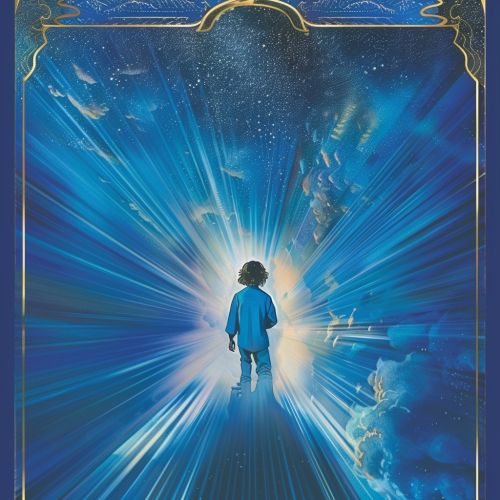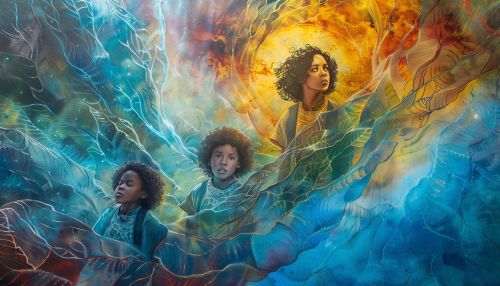Madeleine L'Engle
Early Life and Education
Madeleine L'Engle Camp was born on November 29, 1918, in New York City. Her parents were Charles Wadsworth Camp, a writer and foreign correspondent, and Madeleine Barnett Camp, a pianist. L'Engle's early life was marked by frequent relocations due to her father's health issues, which were a result of his exposure to mustard gas during World War I. This nomadic lifestyle influenced her later works, as themes of displacement and the search for home are prevalent in her writing.
L'Engle attended a series of private schools, where she often felt out of place and struggled academically. Despite these challenges, she found solace in writing and reading, developing a love for literature at an early age. She later attended Smith College, where she graduated with a degree in English in 1941.
Literary Career
Early Works
L'Engle's first novel, "The Small Rain," was published in 1945. The book, which is semi-autobiographical, explores the life of a young pianist and reflects L'Engle's own experiences with her mother's musical career. Although it received modest acclaim, it did not achieve significant commercial success.
Her subsequent works, including "Ilsa" (1946) and "And Both Were Young" (1949), continued to explore themes of adolescence and self-discovery. However, it was not until the publication of "A Wrinkle in Time" in 1962 that L'Engle gained widespread recognition.
A Wrinkle in Time
"A Wrinkle in Time" is perhaps L'Engle's most famous work. The novel, which blends elements of science fiction and fantasy, follows the journey of Meg Murry, her brother Charles Wallace, and their friend Calvin O'Keefe as they travel through space and time to rescue Meg's father from an evil force known as IT. The book introduces the concept of a tesseract, a fifth-dimensional phenomenon that allows for instantaneous travel across vast distances.
The novel was initially rejected by numerous publishers, who found its complex themes and unconventional narrative challenging. However, it was eventually published by Farrar, Straus & Giroux and went on to win the Newbery Medal in 1963. "A Wrinkle in Time" has since become a classic of children's literature and has been adapted into various media, including a 2018 film directed by Ava DuVernay.


Subsequent Works and Series
Following the success of "A Wrinkle in Time," L'Engle continued to write prolifically. She authored several sequels, collectively known as the Time Quintet, which includes "A Wind in the Door" (1973), "A Swiftly Tilting Planet" (1978), "Many Waters" (1986), and "An Acceptable Time" (1989). These novels further explore the Murry family's adventures and delve into complex scientific and philosophical concepts.
In addition to the Time Quintet, L'Engle wrote the Austin Family Chronicles, a series of novels that focus on the lives of the Austin family. The series includes titles such as "Meet the Austins" (1960), "The Moon by Night" (1963), and "A Ring of Endless Light" (1980), the latter of which won the Newbery Honor.
L'Engle also wrote several standalone novels, including "The Arm of the Starfish" (1965), "Dragons in the Waters" (1976), and "A House Like a Lotus" (1984). These works often feature recurring characters and settings, creating a cohesive universe that spans multiple books.
Themes and Style
L'Engle's writing is characterized by its blend of science fiction, fantasy, and realism. She often incorporated scientific concepts, such as quantum physics and genetics, into her narratives, making her work accessible to both young readers and adults. Her stories frequently explore themes of love, faith, and the battle between good and evil.
A devout Christian, L'Engle's faith played a significant role in her writing. However, she approached religious themes with a sense of inclusivity and openness, often drawing on a variety of spiritual traditions and philosophies. This approach sometimes led to controversy, particularly among conservative Christian groups who felt her work was too eclectic.
L'Engle's narrative style is marked by its lyrical prose and rich character development. She had a talent for creating complex, multi-dimensional characters who grapple with profound moral and existential questions. Her ability to weave intricate plots with deep emotional resonance has earned her a lasting place in the literary canon.
Personal Life
In 1946, L'Engle married actor Hugh Franklin, whom she met while performing in a production of Anton Chekhov's "The Cherry Orchard." The couple had three children: Josephine, Maria, and Bion. They moved to a dairy farm in Connecticut, where L'Engle found the peace and solitude necessary for her writing.
L'Engle and Franklin's marriage was a partnership in both life and art. Franklin often supported L'Engle's writing endeavors, and their home became a gathering place for artists, writers, and intellectuals. Despite the demands of her literary career, L'Engle remained deeply committed to her family, often drawing inspiration from her experiences as a wife and mother.
Later Years and Legacy
In her later years, L'Engle continued to write and publish, producing works such as "Two-Part Invention: The Story of a Marriage" (1988), a memoir about her life with Franklin, and "The Rock That Is Higher: Story as Truth" (1993), a collection of essays on the power of storytelling.
L'Engle's contributions to literature have been widely recognized. She received numerous awards and honors, including the Margaret A. Edwards Award for lifetime achievement in young adult literature and the National Humanities Medal. Her work has been translated into multiple languages and continues to inspire readers around the world.
Madeleine L'Engle passed away on September 6, 2007, at the age of 88. Her legacy endures through her extensive body of work, which continues to captivate and challenge readers of all ages.
